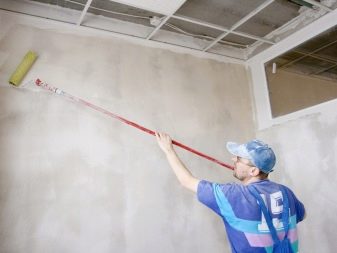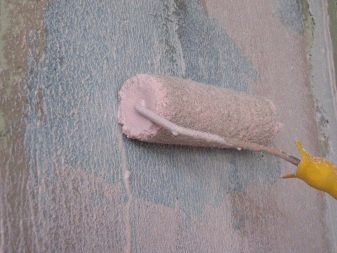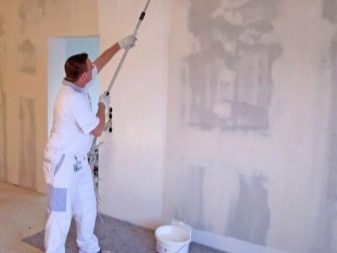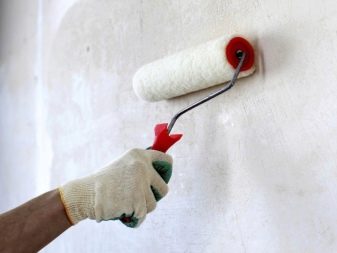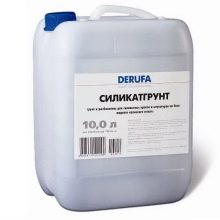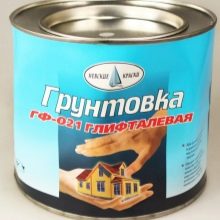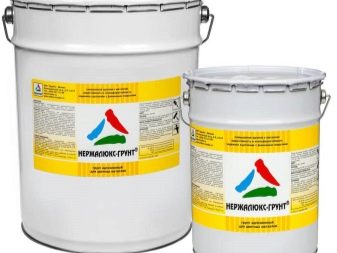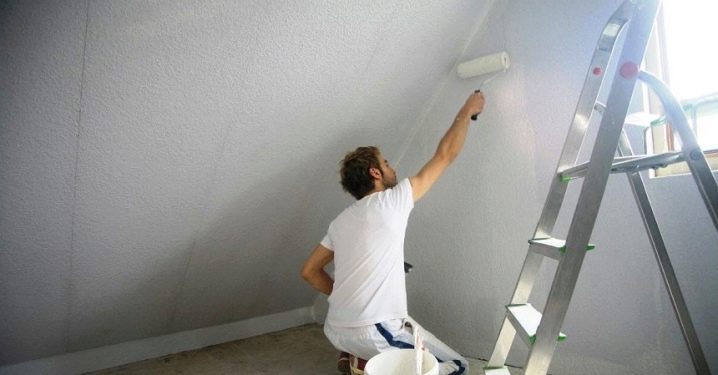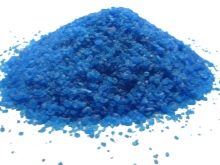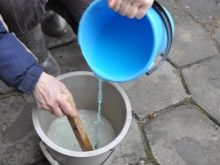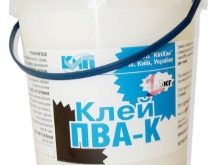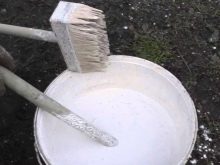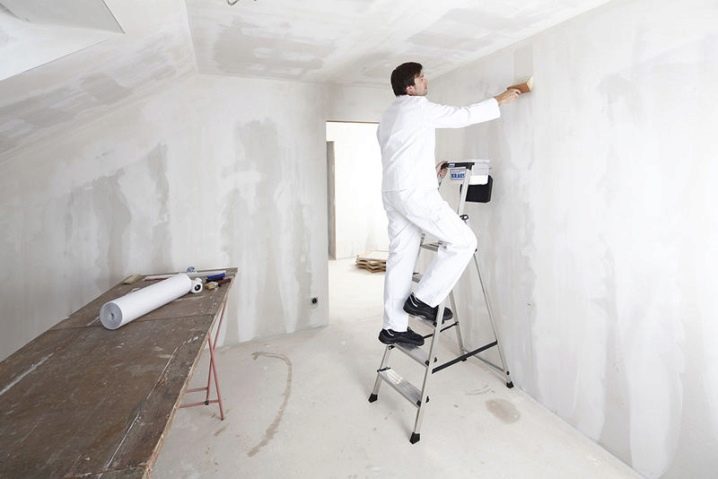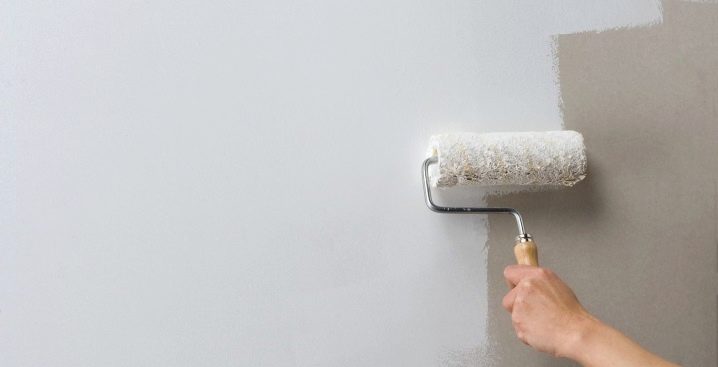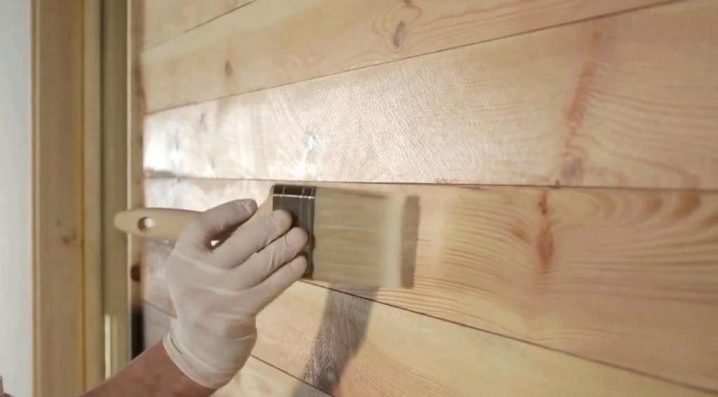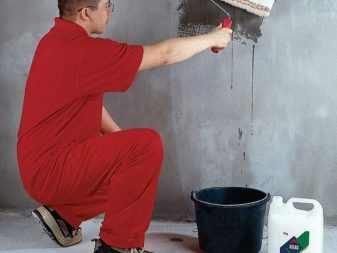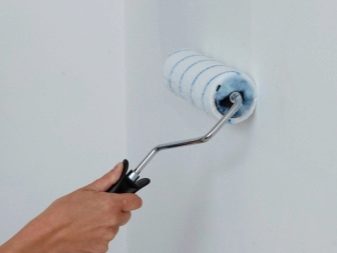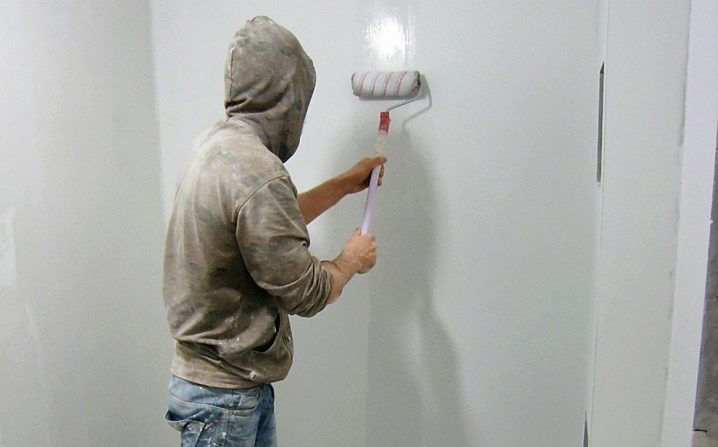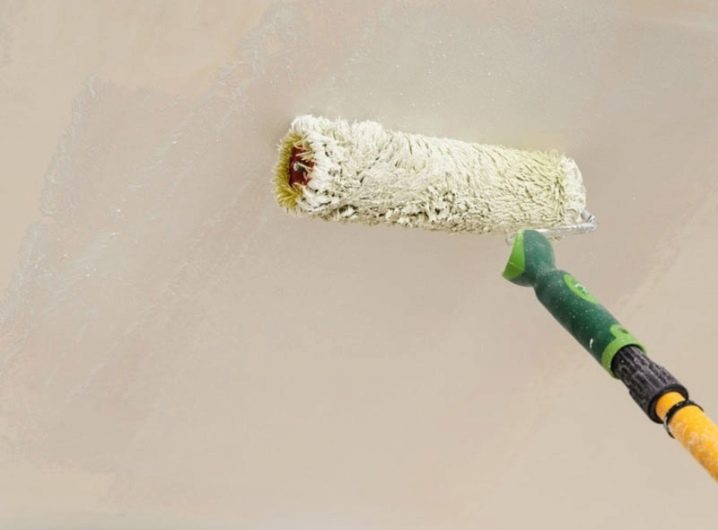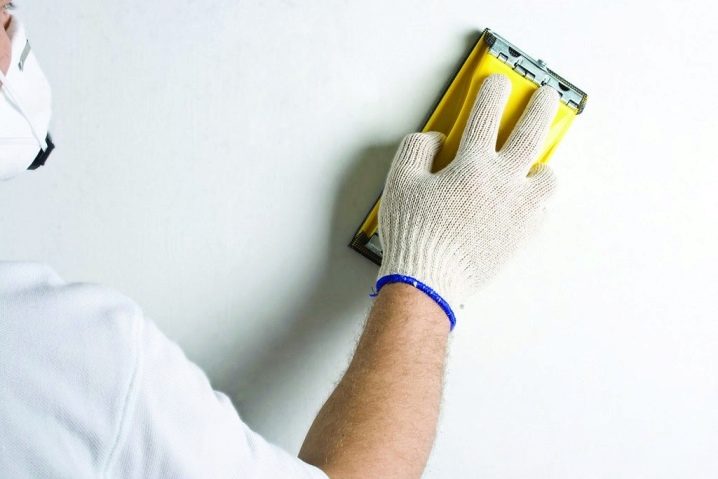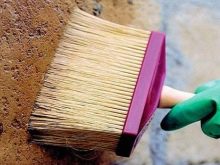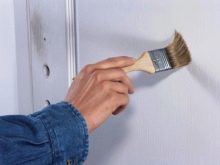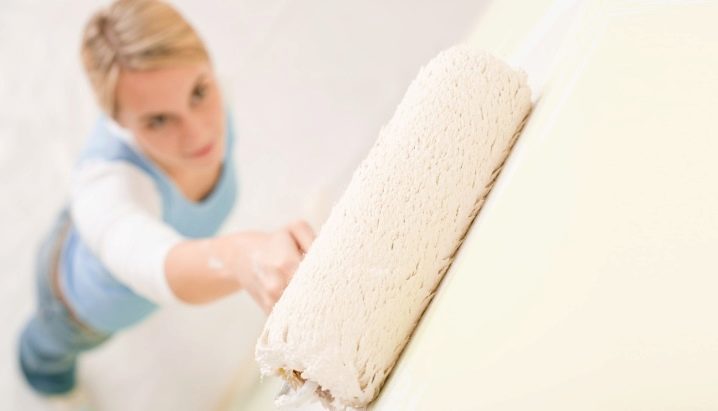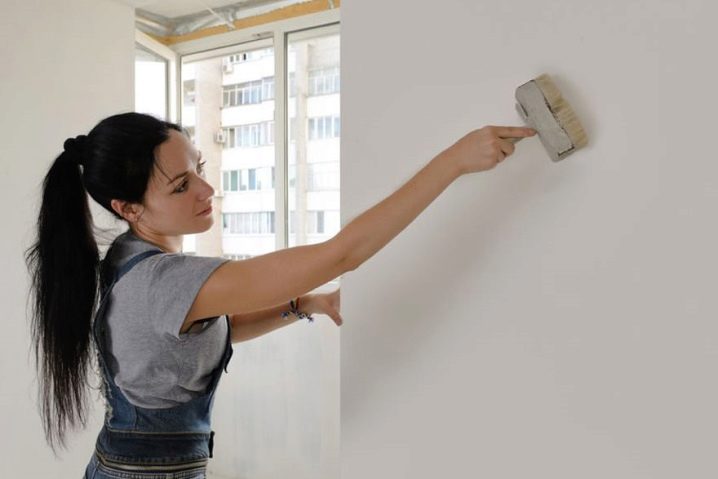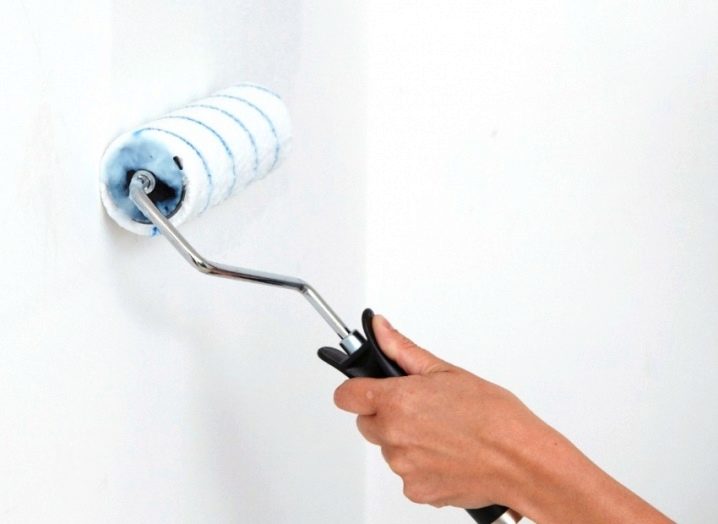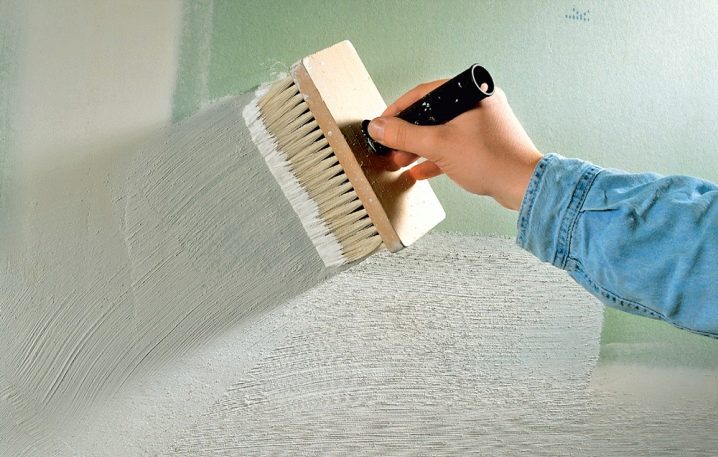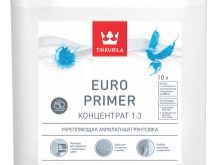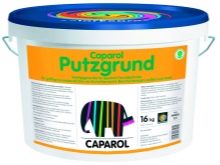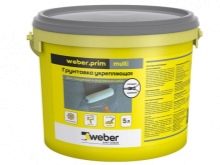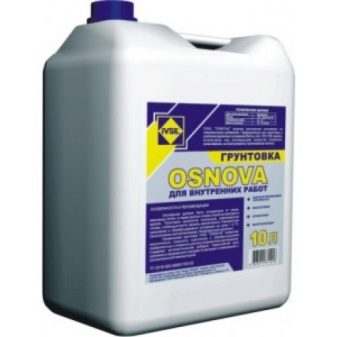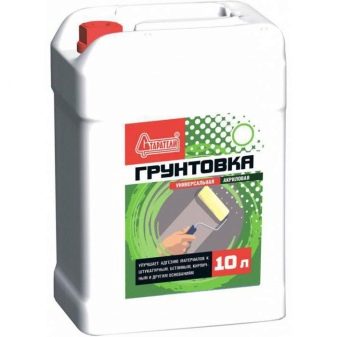Primer walls for wallpaper: high-quality finish
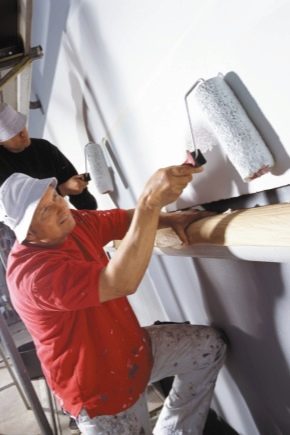
Having started a repair, many people neglect such an important stage of work as priming the walls. And it is completely in vain. The use of primer compositions before finishing allows the coating to adhere more tightly to the surface of the walls, minimizing the risk of defects in the future.
However, you should not use any soil that is “at hand”. It is necessary to know and understand how to properly handle the walls, what you need and what is under a strict ban.
Why do you need it?
One of the most important stages in the preparation of walls before painting or wallpapering is priming.
Consider the main functions of the primer:
- Adhesion. Increasing the adhesion between materials ensures a tight fit of the layers and prevents the sheets from peeling off. With insufficient adhesion, the new tile soon falls off with the glue, fresh plaster begins to crumble, and expensive wallpaper rolls off. However, cheap wallpaper is waiting for the same fate. And these manifestations are the stronger, the more even and smooth the surface was before finishing. That is why the priming of walls is of fundamental importance.
When processing, the walls become rough, due to which the top layer of finishing materials adheres to the walls as firmly and evenly as possible.
An example of a typical adhesive compound that is widely used for processing smooth, smooth surfaces is concrete contact. It includes small particles of quartz in combination with an adhesive base. When applied, the surface remains fairly flat, but acquires the required degree of graininess, which ensures high quality of further work on finishing and décor.
- Surface reinforcement. Soil deeply (up to 15 cm) penetrates into the pores of the walls and glues them together, thereby minimizing the likelihood of base delamination.The material becomes more durable and uniform. The smaller the internal defects of the walls, the higher the quality of the finish.
Priming reduces the likelihood of subsequent destruction of the material and this is very important for all types of walls, especially for porous and loose materials (plaster or brick).
- Antiseptic treatment. Mold and fungus appearing on the ceilings and walls of the room is a life-threatening phenomenon. From the appearance of such uninvited guests neither the owners of the cottages, nor the inhabitants of the high-rise buildings are insured - they arise everywhere where there is high humidity and little air, where the temperature is not particularly high, and there are no opportunities for airing. That is why mold most often appears in bathrooms, but it can often be found in residential areas. Allergies, asthma, chronic diseases of the bronchopulmonary and nervous systems are just some of the dangers that await the inhabitants of the affected apartments and houses.
To reliably protect the walls from mold, use special soils, which include antiseptics. They destroy bacteria and prevent the reproduction of these dangerous microorganisms, making the microclimate clean and healthy.
- Reduced adhesive consumption. In the process of priming the wall is covered with a smooth film, which prevents excessive absorption of adhesives.
The use of a primer greatly facilitates the process of applying finishing coatings (glue, plaster or paint), which means that raw materials are consumed more economically. For surfaces treated with special compositions, just a single layer of paint is enough, but “bare” surfaces need two, three or even more layers. This leads to an increase in paint (or glue) consumption, time and effort, since each applied layer must dry thoroughly before applying the next one.
That is why priming is not only high quality but also tangible savings.
- Disguise. Dark and yellowed spots are masked - this is especially important before applying light wallpaper or painting with white enamels. If you purchased a house or apartment in the secondary market and started repairs, after removing the wallpaper or the old paint, you can find greasy stains, as well as indelible traces of coffee, colored ink, corrosive soot, tobacco and similar unpleasant surprises.Such tracks are likely to shine through the new wallpaper, especially if you use light, uniform tones, and this will inevitably ruin the whole look of the room.
To combat such stains, they use special pigmenting primers that effectively mask the spots once and for all.
- Moisturizing. Uniform moistening of the treated surface is of fundamental importance before plastering. If the wall is not moistened, then in different areas the finishing hygroscopic layer will begin to dry at different speeds - somewhere it will dry longer, and somewhere too quickly and you will have to wet the walls again and again. All this invariably leads to the fact that the surface is covered with stains and looks unaesthetic. The reason here is in the heterogeneity of the material itself. Chips and small cracks can be located inside, and in addition, some parts warm up faster (near pipes and batteries). It is priming that provides hydration and uniform drying of the coating, and therefore, improves the quality of the finishing work.
Types of primers
All types of primers are divided according to three criteria: solubility, base material and scope.
According to the criterion of solubility, there are:
- water-based - acrylic, as well as silicone and silicate;
- on the basis of natural minerals (gypsum, cement);
- compounds dissolved by organic matter - polyurethane, latex, alkyds.
According to the components used:
- alkyd - universal mixes, equally effective on wooden, concrete or metal surfaces;
- acrylics are used mainly on brick and plastered walls; they work well on surfaces such as fiberboard and particleboard;
- polyurethane - optimal for coatings with low absorbency, as well as on dirty and dusty walls;
- latex - effective suspensions, suitable for all types of walls;
- silicate mineral - suitable for concrete and plastered surfaces;
- glyphthalic - the most effective for the preparation of bases of metal or wood, used in rooms with high levels of humidity;
- Perchlorovinyl are considered universal soils, optimal for the preparation of poorly and rarely heated premises. Keep in mind that perchlorvinyl compounds have an unpleasant odor, so treatment should be carried out only in a well-ventilated area;
- aluminum is effective for surfaces affected by fungus;
- Epoxy is optimal for metal surfaces, they reliably protect corrosion and increase adhesion with finishing materials;
- shellac compounds prevent the formation of resins, and therefore are used when working with wooden surfaces.
By purpose, the primers are divided into the following types:
- Universal designed for all surfaces and under any coating. As a rule, they are used for small amounts of work in those cases when there is no specialized composition available or for the treatment of such surfaces, which consist of materials of mixed type.
- Anti-fungal recommended for kitchen and bathroom. They contain components that prevent the growth of fungi and mold. They provide adhesion of such strength that the coating adheres firmly to the base, and no microorganisms can penetrate inside.
- Anti-corrosion is used to work with metal elements, prolong their service life, prevents the appearance of rust.
- Mixes of deep penetration - an excellent option for porous, not strong enough and loose grounds.Thoroughly strengthen this wall, so it is often used in work with plaster, drywall and foam concrete.
- Covering primers with insulating properties.
- Pigment suitable for light materials.
By the way, some craftsmen prefer to do the primer with their own hands. There are a few common recipes:
- From laundry soap and blue vitriol. To prepare such a composition, water is taken and brought to a boil, after which rubbed soap is added to it. For 7 liters of liquid will need 1 briquette 65% soap. There you also need to add 100 g of copper sulfate and 50 g of glue for joinery. The composition is cooked on low heat for half an hour, after which it is filtered and cooled.
- The second part is easier to cook. It will require 1 liter of PVA glue and 5 liters of water. The glue is diluted with water to a uniform consistency, after which you should add a little cement to it, stir and strain.
Both formulations provide deep penetration and ensure high adhesion. All components of the mixture are available and have a low cost. Their only drawback is the lack of antiseptic characteristics.
As the soil is also used wallpaper paste or PVA, diluted with water.
Specifications
In times of shortage, ordinary glue was used as a primer. Now, when the range of the proposed formulations is wide and varied, it is not so easy for the consumer to answer the question - which primer to prefer? Let's try to understand the subtleties of choice.
In order to correctly determine and choose a suitable primer, you first need to know what type of surface will be applied to the composition, as well as to study the characteristics of the room (humidity, temperature) and the type of finishing material.
The choice of primer is based on several aspects:
By type of wall covering
In the building stores there is a wide selection of dry and liquid primers for hardboard, OSB slabs, bricks, metal and wood. It is very important to take into account the condition of these surfaces. When they sypyatsya, it is worth buying a suspension with deep penetration, if the walls are affected by fungi or dangerous mold, it is better to treat them with a quick-drying mixture with fungicides.
Different surfaces require different primers. For example, drywall “will accept” not every primer: it absorbs moisture, and if the composition for processing is not correct, then the layer of wallpaper in the future will be removed only with cardboard.That is why special requirements are imposed on primers for this type of materials: there is no solvent in its composition and it must have moisture-resistant properties. The best choice would be an acrylic primer, it will protect the material and ensure maximum adhesion of surfaces.
Not every soil is suitable for plywood because of its porous structure and high water absorption. The optimal choice would be an alkyd suspension based on drying oil or water-acrylic compounds.
For fresh untreated wood, as well as fiberboard and particleboard, it is better to purchase improved alkyd primers, they strengthen the pores and prevent the fabrics from swelling. However, in their composition there is an organic solvent, so the soil can not be used in residential areas. In houses and apartments, preference should be given to acrylic soils - they have the same properties, but they are completely safe for human life and health.
Concrete surfaces, as well as bricks, are treated with mineral compositions based on cement or gypsum.
If the walls are covered with old putty, then in addition to the primer, it is advisable to cover the walls with diluted glue.Otherwise, the wallpaper will first stick, but after a while it will fall off along with the top layer of putty.
By type of wallpaper
When choosing a primer, you should take into account the material under which it is applied - under wallpaper or painting. In theory, you can use universal mixes, but it would be more correct to focus on specific types of wallpaper (vinyl, non-woven or paper-based), as well as a type of paint and to prime the walls just for them. Many put diluted wallpaper paste, but it can leave stains and cause the wallpaper to turn yellow, so this option cannot be considered the most successful.
Acrylic primer will be effective for all types of wallpaper. However, flizelinovye "require" alkyd suspension. Due to the high number of pigmented particles, as well as the property to form a thin semi-matte film, it perfectly masks the dark spots on the walls and forms the ideal basis for flickering wallpapers, emphasizes color.
Under the water-based paint, which is mainly used in works on interior decoration, it is desirable to use polymeric compositions.
How to handle the surface?
Proper preparation of the walls is a guarantee of the quality of further finishing works. Before starting work, remove the old wallpaper or paint, remove the crumbling plaster layer, wash the whitewash, degrease and level the wall.
If they are old wallpaper - they are removed with a spatula. Before starting to dismantle the surface is abundantly moistened with water or a special liquid. To remove simple paper wallpaper will be enough soapy solution, but on the more dense washable canvases should be made small incisions so that the liquid could penetrate into the base and facilitate their removal.
If you can not remove the coating from the first time, then it is necessary to repeat the operation.
Tip: for hard-to-wallpaper, you can take an ordinary iron. The heating surface is applied to the desired place through a damp cloth and pressed for a few seconds.
After all the old wallpaper is removed, the wall is cleaned and cleaned with a spatula.
If the wall is plastered, then there is no unequivocal answer to the question about removing the old layer - here everything depends on the condition of the coating. It is quite simple to check it - you just need to tap the wall.If the coating is loose and has cracks, the putty will simply sprinkle, such a coating should be removed and a new layer applied.
Painted walls are cleaned in different ways. If a conventional scraper is sufficient for a water emulsion, then enamel paints may require special solvents. The cleaned wall should be treated with coarse sandpaper.
Any surface cleaning must be carried out in accordance with safety regulations. When working, use a universal respirator and goggles; the room should be ventilated. If removers are used to remove the old paint layer, the skin should be protected with a special paste from the adverse effects of solvents.
It is extremely important not to allow the removal of old coatings with a soldering iron and gas burners.
If mold or mildew is found, sanitize with bleach or specialty products.
Only after pre-treatment should proceed directly to the application of the soil. And remember - the mixture is applied only to completely dried walls!
To prime the wall, it is necessary to primer the composition itself, as well as tools: paint roller, container (pan) and brush.
Please note that the soils are sold in liquid and dry form. The first can be used immediately, but the second should be diluted with water in the proportions indicated by the manufacturer on the package.
Instructions for applying priming compositions as follows:
- brush off the dust left over by removing the old coating with a special brush;
- degrease the base - this will ensure good adhesion of the soil to any base, as a rule, this is done using white spirit or ordinary acetone;
- apply the primer on the wall with a special paint roller, avoiding the appearance of "puddles", splashes and drips;
- treat hard-to-reach places (ledges, corners, decorative elements) with a brush.
The coating layer should not be thick. After the first layer has dried, apply the primer again.
If you use glue as a primer, then you should take into account several features of this composition. It is very important to dilute the composition with water to a milky consistency.This is especially true if you use PVA glue (it is used in rooms with high humidity) - otherwise you will not be able to tear off the wallpaper before the next sticking, even wetting it abundantly.
How long does it dry?
After the entire primer is applied to the wall, you need to wait until it is completely dry. Wallpapering or painting is possible only after the wall is completely dry.
How much to wait depends on many factors, not least the type of soil itself:
- acrylic primer dries in about 2-3 hours;
- alkyd dries after 20 - 22 hours ;.
- it will take about a day to freeze the glyptal soil;
- about a day will take drying polyurethane suspensions;
- silicone primer takes about 5 hours;
- Latex primer dries quite quickly - you can start finishing work 2 hours after its application;
- silicate and mineral compounds are the longest dryers - they will need more than a day;
- but water-based mixtures dry instantly - you can apply paint and glue the wallpaper after 20-30 minutes.
The speed at which the wall dries can be affected by other factors, among them:
- air humidity - the higher it is, the slower the soil dries;
- the temperature in the room is excessively low and the high temperature reduces the drying rate of the coating;
- layer thickness - the denser it is, the more time you have to wait;
- base structure - the deeper the coating penetrates the wall, for example, for drywall, the longer it will take to wait for the cover to dry completely.
In the process of drying the primer is very important to comply with several requirements:
- Avoid temperature fluctuations in the treated room;
- do not allow drafts;
- Do not attempt to dry the wall artificially.
Any deviation from the specified norms causes uneven strengthening of the layer, and accordingly, reduces adhesion on certain parts of the surface.
Important points
Priming the surface of the walls before finishing is mandatory - it ensures the high quality and durability of the subsequent gluing of wallpaper or painting the wall. Work with the soil does not require special equipment and can be carried out even by a non-professional.
However, it is important to adhere to some principles:
- Choose a primer suitable for your surface.
- Follow the manufacturer's instructions clearly, the entire order of work is indicated on the outside of the package. The product should be diluted only in the proportions specified by the manufacturer. If you make the mixture more or less concentrated, the primer will lose its performance and its use will lose all meaning.
- Use a roller - it provides a uniform overlay layer, but hard-to-reach areas should be treated with a brush of small diameter.
- Treat the porous base several times; treat damaged surfaces with two types of solutions: in the first stage, antiseptic, in the second - universal.
- Take your time, wait for the surface to dry naturally.
- Do not dilute the entire mixture at once (if you purchased dry soil) - most often only a part of the feedstock requires work.
- If during work the primer gets on the floor, window or clothes - wipe the place of contamination with a rag dipped in water. The sooner you do this, the easier it will get rid of ugly spots.
- Wash rollers and containers immediately.
These rules are simple, but it is their observance that will guarantee that all subsequent work will be carried out quickly, practically and efficiently.
Well, in the end we recommend to get acquainted with the best manufacturers of primers in the world. It is unlikely that anyone will doubt that the primer of a well-known brand is of excellent quality. But the product from an unfamiliar company is always fraught with risk: you may be lucky, and the product will have all the stated characteristics, and it may turn out to be much worse than expected.
If you do not want to play roulette, we advise you to give preference to the products of one of the leaders in this market segment:
- Ceresit - the absolute leader in the market of building mixtures. The company with a world name and a century of history. For more than 100 years, this manufacturer has offered the consumer high-quality products in a wide range. To date, Ceresit has opened its plants in Russia, which has significantly reduced the prices of products for the domestic consumer. The production of soils of all types and, of course, under the wallpaper.
- Knauf - a famous German holding formed in the 1930s of the last century. The brand has been known on the Russian market since 1993. Products are represented by universal formulations, deep penetration agents, and soils for absorbent substrates.The ever-increasing quality of products here is ensured by the tireless introduction of the latest technologies and the improvement of the management system.
- Tikkurila - a company from Finland that has been successfully selling its products since 1862. The production capacity of the giant is represented in several countries where production of paints and other materials is established. The category of primers here is represented by acrylic compositions, as well as suspensions with moisture-insulating parameters and enhanced adhesive properties.
- Caparol - a brand with a world name. The company began work in the distant 1885, today the products are sold in dozens of countries around the world. The manufacturer offers a variety of soil types, including frost-resistant formulations and wallpaper.
- Weber - a producer of building mixtures under the brand Vetonit. There is a production of soils for facade and interior decorating.
- Ivsil - Russian manufacturer. The company is relatively young - it is only 20 years old, but it is firmly established in the positions of one of the leaders in the market of building mixtures. It is engaged in the production of universal soils and compositions for maximum penetration.
- "Miners" - Another domestic factory, which started in 1992. The basic principles of its work are based on the introduction of scientific and technological progress, the improvement of technology and tireless quality control. Now the "miners" offer concrete contacts and suspensions for surfaces with high absorption to the Russian buyer of the primer.
How fast and easy to apply primer, see the video below.
